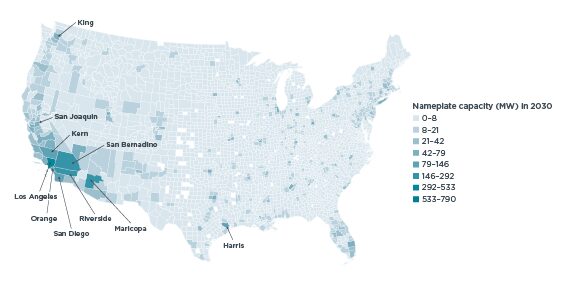Report
Mind the gap: An assessment of 2030 and 2035 charging infrastructure needs for zero-emission medium- and heavy-duty vehicles in the United States
As the U.S. zero-emission medium- and heavy-duty vehicle (ZE-MHDV) market continues to grow, the charging network will need to expand to keep pace with rising energy needs. This report projects charging infrastructure needs for ZE-MHDVs in the United States at the state and county levels in 2030 and 2035. It updates a 2023 analysis, which established the ICCT’s first national near-term charging infrastructure needs assessment for Class 4-8 ZE-MHDVs, applying revised technology and charging behavior assumptions to produce charging estimates under three policy scenarios simulating low, moderate, and high ZE-MHDV adoption.
Under all three scenarios, energy demand and charger capacity are expected to increase dramatically by 2035. For instance, in the moderate adoption scenario, projected needs are 40,600 MWh of energy from the grid daily by 2030, with total charger nameplate capacity of almost 13,200 MW (Figure 1). Projected energy consumption and nameplate capacity increase dramatically by 2035, with total energy needs rising to 151,000 MWh and total charger nameplate capacity climbing to 40,600 MW.
Figure ES1. National charger nameplate capacity under the moderate scenario, 2030

Charging needs are projected to be concentrated along freight corridors or near ports or other zones with high MHDV traffic, with most of the top counties in terms of projected ZE-MHDV energy consumption located in California and in states along major National Highway Freight Network routes. In all three scenarios, 90% of charging needs can be met by lower-powered overnight chargers—though the actual power composition of the charging network will ultimately be shaped by various factors, with important implications for demands on the grid and utility load management.
